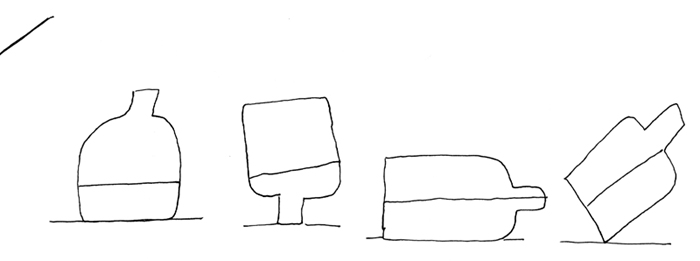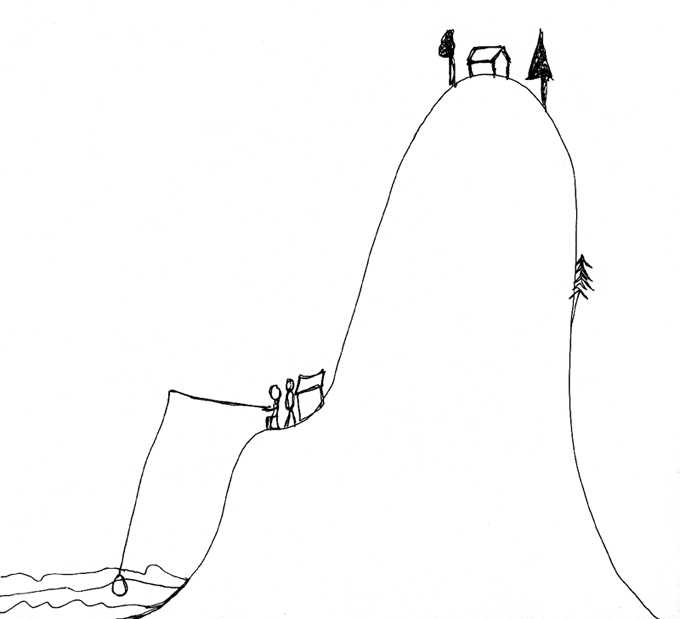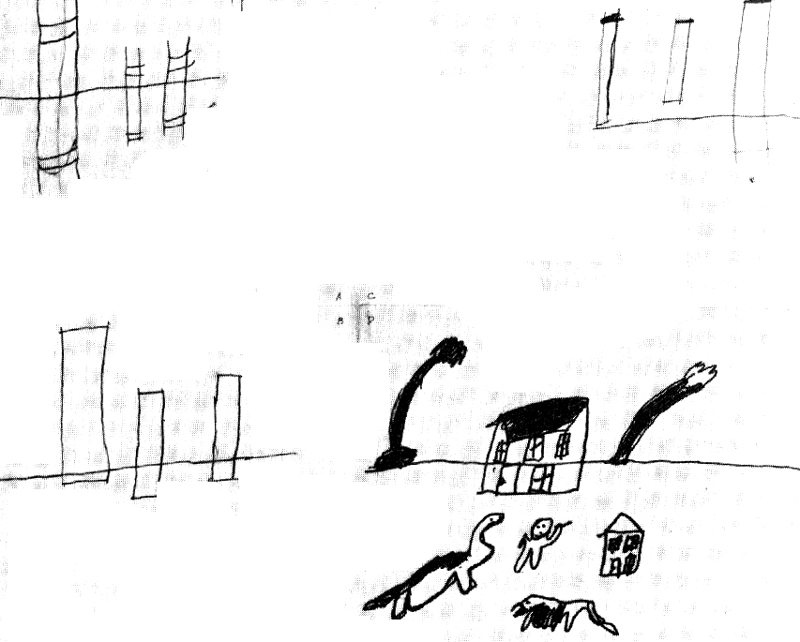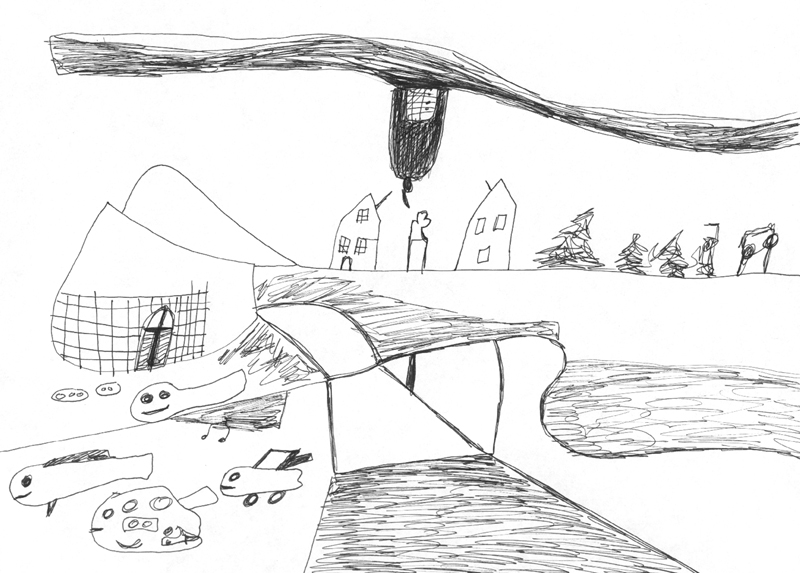 Back to Silver Drawing Tests
Back to Silver Drawing TestsAdministering the
SDT
Administering
Copyright 1983/1990/1996 by Rawley Silver, reprinted with permission
from its original publication.
No portion of this work may be copied without written consent by Rawley Silver.
The following are excerpts from
Silver, R. A. (1996). Silver Drawing Test of cognition and emotion. Sarasota, FL: Ablin Press.
The age range recommended for the SDT is from age 5 to adult, although the test has been used effectively with children as young as 3 years 6 months, as shown in Figure 31. There is no time limit. Most examinees take 12 to 15 minutes to complete the three tasks shown in Appendix A.
The test has been administered and scored without preliminary training by teachers, art therapists, psychologists, and other mental health professionals. Individual administration is recommended for children younger than seven, for examinees who may have difficulty understanding directions, and for children or adults who are being examined clinically.
In group administration, it is useful to arrange the Drawing from Observation task before examinees enter the room. Place the cylinders and the stone on their outlines on the layout sheet. The arrangement should be below eye level so that the layout sheet will be seen as a plane (if the arrangement is at or above eye level, the layout sheet will be seen as a line, obstructing the perception of depth and lowering performance scores). When testing large groups of examinees, long narrow cafeteria tables can be useful with cylinder arrangement at both ends, and chairs along both sides. Note that the widest cylinder should be visible on the left, the tallest, on the right, and the stone, to the right of the small cylinder. Check viewpoints from the farthest seats before examinees arrive.
Set each place with the test materials and a sharpened pencil with eraser, reserving a copy and a pencil for yourself. Do not encourage or discourage examinees from erasing because erasures can provide useful information and determine scores in the Predictive Drawing subtest.
It is important to establish an atmosphere that is encouraging and supportive. As an introduction, you might say, "I believe you will have fun with this kind of drawing. You will be asked to draw things you can see, things you cannot see, and things only you can imagine. It doesn't matter whether or not you have talent in drawing. What matters most is using your imagination and expressing your own ideas."
After examinees begin responding to the drawing tasks, discourage interruptions and distractions, including your own. Whenever possible, postpone discussions until all have finished drawing.
page 21-22.
If examinees have difficulty reading directions, hold up your test booklet, turn the page, point to the first glass on the left and say, "Here is an ice cream soda. Suppose you drank a few sips."
In your booklet, demonstrate by drawing a horizontal line in the second glass near the top, and say,
"Can you draw lines in the glasses to show how the soda would look if you took a few sips, then a few more, and more, until you gradually drank it all?"
If an examinee has difficulty understanding, pantomime with a drinking straw, taking care not to make a series of gestures or indicate where lines should be drawn. If you use manual language, modify the directions as needed.


This example is from Silver, R. A. (1989). Developing cognitive and creative skills through art. New York: Ablin Press, 186-187.
"The Predictive drawing task assesses concepts of
horizontality, verticality, and sequential order." Silver (1996)
Present each examinee with a copy of the Drawing from Observation page. If they have difficulty reading, pantomime sketching the arrangement on your page (no more than five seconds) and say,
"Have you ever tried to draw something just the way it looks? Here are some things to draw. Look at them carefully, then draw what you see."

This example is from Silver, R. A. (1989). Developing cognitive and creative skills through art. New York: Ablin Press, 186-187.
"The drawing from observation task asses concepts of space." Silver (1996).
Present examinees with copies of the Form A Stimulus Drawings together with copies of the drawing page. If they have difficulty reading directions, hold up your copy of the stimulus drawings and say,
"Here are some pictures of people, animals, and things. Choose two picture ideas and imagine a story - something happening between the pictures you choose."
"When you are ready, draw a picture of what you imagine. Show what is happening in your drawing. You can change the pictures and draw other things too. Make your drawing tell the story."
Use pantomime or manual language as needed. If an examinee traces or copies the stimulus drawings, do not intervene unless you believe that the instructions were misunderstood.
After about 8 minutes, encourage those still drawing to finish quickly. After drawings are finished, ask for the stories. If a respondent has difficulty writing, ask what is happening in the drawing, then write the response verbatim on the lines provided.
Whenever possible, discuss responses individually so that meanings can be clarified. If the meaning remains unclear, ask questions, such as, "Can you tell me what your subjects are doing?" "What are they thinking?" "How do they feel?" "What may happen later on?" If it seems appropriate, also ask, "if you were in this picture, how do you imagine you would feel?"

This example is from Silver, R. A. (1989). Developing cognitive and creative skills through art. New York: Ablin Press, 186-187.
"The drawing from imagination task assesses attitudes
towards self and others, as well as ability to select, combine, and represent."
Silver (1996)